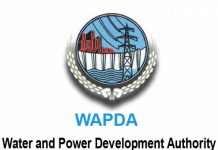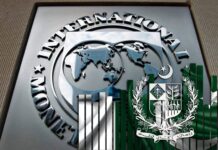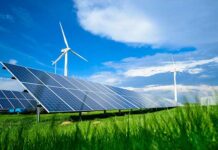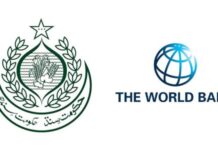
Prime Minister Shahid Khaqan Abbasi recently said that the country would experience an electricity surplus in the region of 2,400-3,400 MW by February next year.
The idea that Pakistan could be producing electricity excess has circulating for the past four months, with the earliest reports suggesting that the country would produce surplus electricity by 2020. However, altered estimates were broken on October 6 by Sun Wedong, the outgoing ambassador of China to Pakistan, which were then repeated by the Punjab Chief Minister Shahbaz Sharif, a few days later.
Sharif expressed his belief that Pakistan would produce a surplus of electricity by 2018, a claim supported by the PABA (Pakistan American Business Association) which estimates that the country would add 5,770 MW of electricity to the national grid by March 2018. With an estimated 4,500 MW of shortfall, the added electricity is expected to bid adieu to the long-term energy crisis that Pakistan has found itself in the midst of since the mid-2000s.

Rushing to take credit
However, it remains to be seen whether these tall claims are, in fact, met or are just a part of Pakistan Muslim League (Nawaz)’s pre-election campaigning: the Chief Minister of Punjab did not lose time in crediting his political party and its current chief, his ousted brother, Nawaz Sharif, in achieving this coveted landmark, when he said, “This is all because of the efforts of Pakistan Muslim League Nawaz and its head, Nawaz Sharif.”

It is important to remember that Pakistan’s ruling party, its chief and his family have been embroiled in multiple corruption scandals, which have seen the former Prime Minister being legally ousted from office in July, leading to a drop in the party’s popularity – at least in vote counts – manifested in the recently conducted by-elections in the party’s stronghold of NA-120, in Lahore.
The Chinese leadership, on the other hand, seems to be using this landmark achievement in glorifying the efforts of China in the developmental advancement of Pakistan. Speaking at the Parliamentary Committee meeting on CPEC, Wedong outlined the monumental role played by the China Pakistan Economic Corridor in speeding up the economic progress of Pakistan. Apart from insisting that the “19 Early Harvest Projects” have thus far contributed 1820 MW of electricity to the Pakistani national grid, Wedong further added that the project has produced as many as 60,000 jobs for the Pakistanis and has helped the country’s growth rate jump from 3.6% to 5.6%, this year.
Contrasting reports on CPEC
However, reports elsewhere suggest otherwise. One news report implies that the Chinese project has, in fact, produced 30,000 jobs for the Pakistanis, and has done negligible benefit to the country’s private sector, preferring not to employ local businesses in a majority of the 59 projects thus far underway or completed.
According to another news report, a prolific businessman comments on the situation in the following words: “When China chose Pakistan for a huge investment initiative under the ‘One Belt, One Road’ plan, it generated euphoria in the business circles. However, just four years later it seems to be giving way to despair. The inability of private Pakistani companies to match Chinese demands has frustrated tycoons.”
Certainly, when the Chinese announced their intention to invest in Pakistan and its development, nowhere did they promise to give employment to the Pakistanis or patronizing country’s local business. Nothing was to bar them from importing entrepreneurial staff and workmen from their own country. However, this reluctance to involve local businesses, preferring, instead, the more expensive route of importing the same all the way from China, paints a worrying picture of the competence and quality of Pakistan’s local business sector.
Resuming focus to the production of electricity in the country: of the “19 Early Harvest Projects” which Sun Wedong credited for helping to rectify the country’s electricity shortage, five are reported to have been completed, and at least four functional. The latter four include the Sahiwal coal-fired power plant, which is currently said to be contributing 1,000 MW of electricity to the national grid, Sachal wind farm, Jhimpir, contributing 50 MW, UEP wind farm, Jhimpir, contributing 100 MW, and HydroChina Dawood wind farm, Gharo, contributing 50 MW. About the sixth, the Quaid-e-Azam Solar Power Park, varying reports have surfaced over the past year, with some suggesting that the power station is functional and producing 100 to 300 MW of energy, while others report that the Park has turned into a white elephant for the Punjab government due to its inefficient production of electricity, and has thus been used sparingly.

In all, the total power currently being produced by these projects amounts to 1,200 to 1,500 MW, which is at least 320 MW off from the estimate presented by the Chinese ambassador. Furthermore, with a regularly reported shortfall of 4,500 MW, how are CPEC’s currently functional ‘Early Harvest Projects’ not only making up for the deficit, but also succeeding in providing the country with an excess of electricity? Are analysts expecting electricity demand across the country to drop more than 3,000 MW, or are these power projects believed to triple their output overnight? And what about natural gas shortages, which are rampant across the country in the winter season? The prime minister of the country is reported to have directed the concerned authorities to shut down less efficient power plants and convert oil-based plants to gas as early as possible. Would that not aggravate the natural gas situation in the country, come winter? And when is the country going to start rejecting non-renewable energy in favour of renewable energy? A lion’s share of even the Early Harvest Projects rely heavily on combustible sources to produce electricity.
There are definite loopholes in the story that Prime Minister Abbasi – and others – should be held answerable for.





















